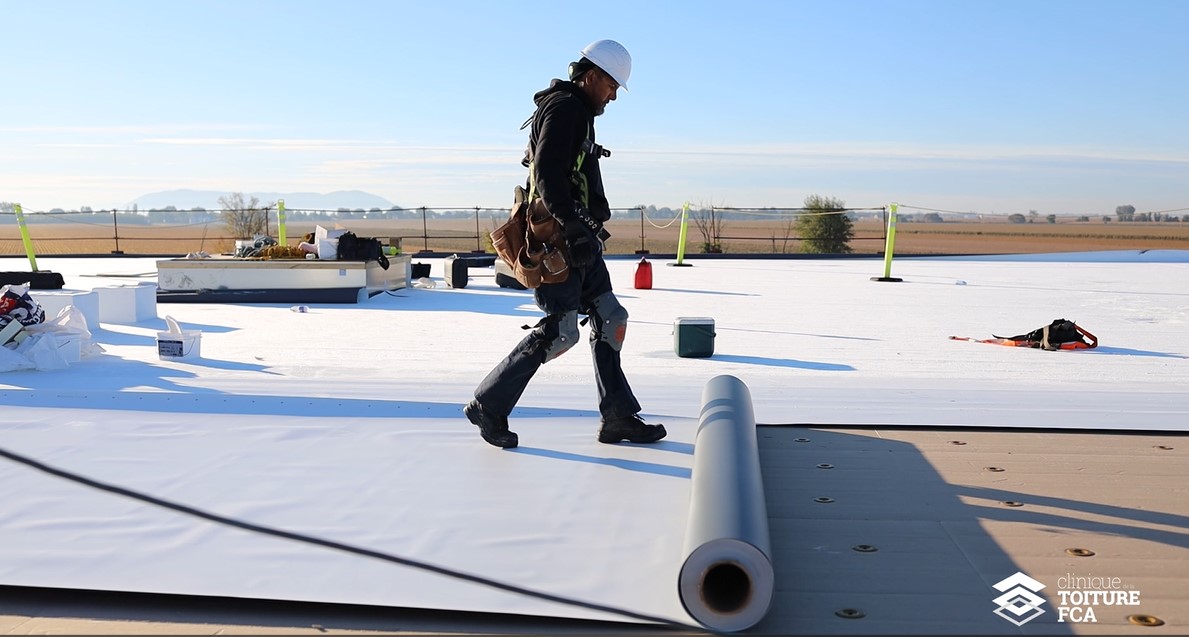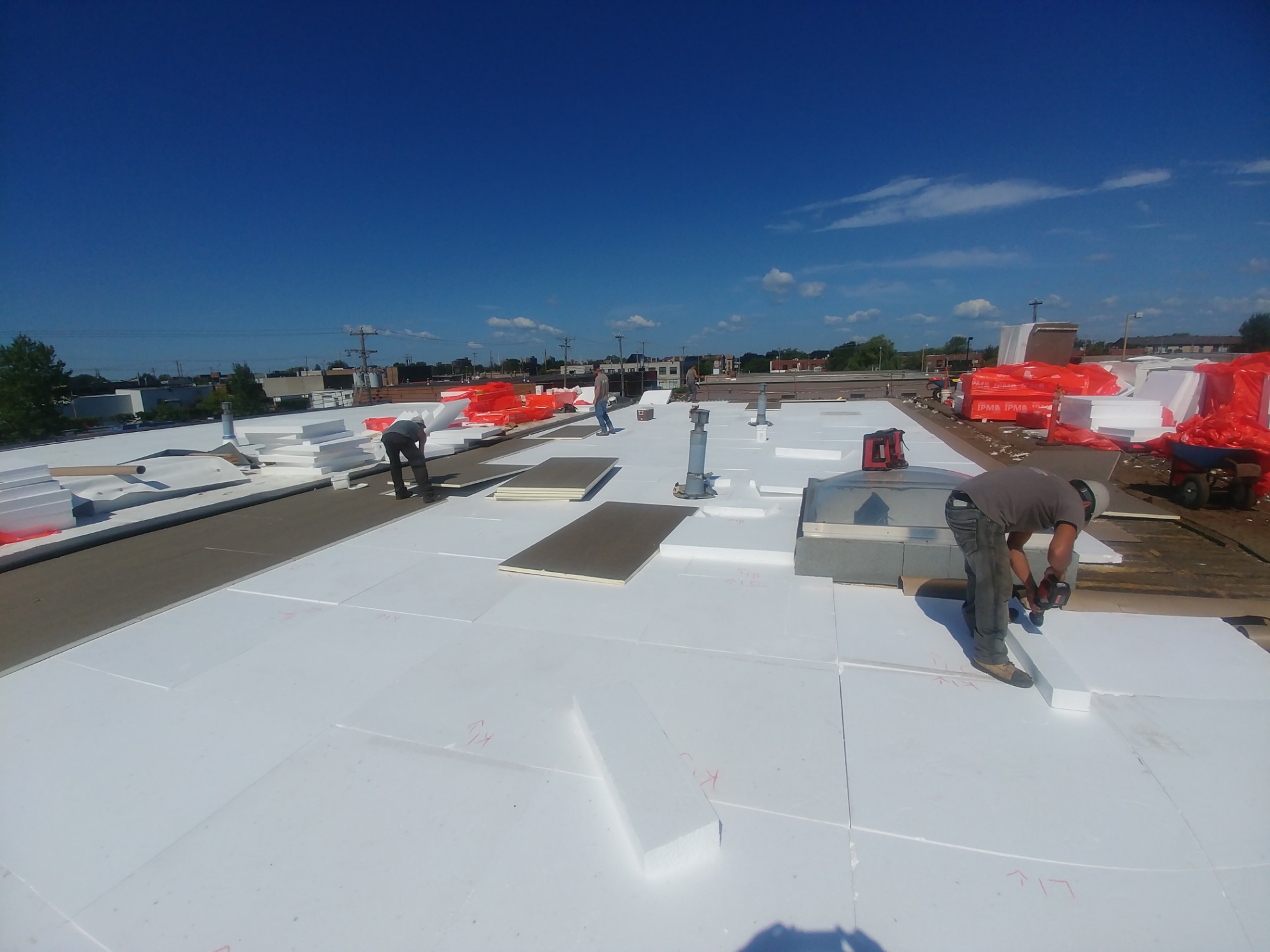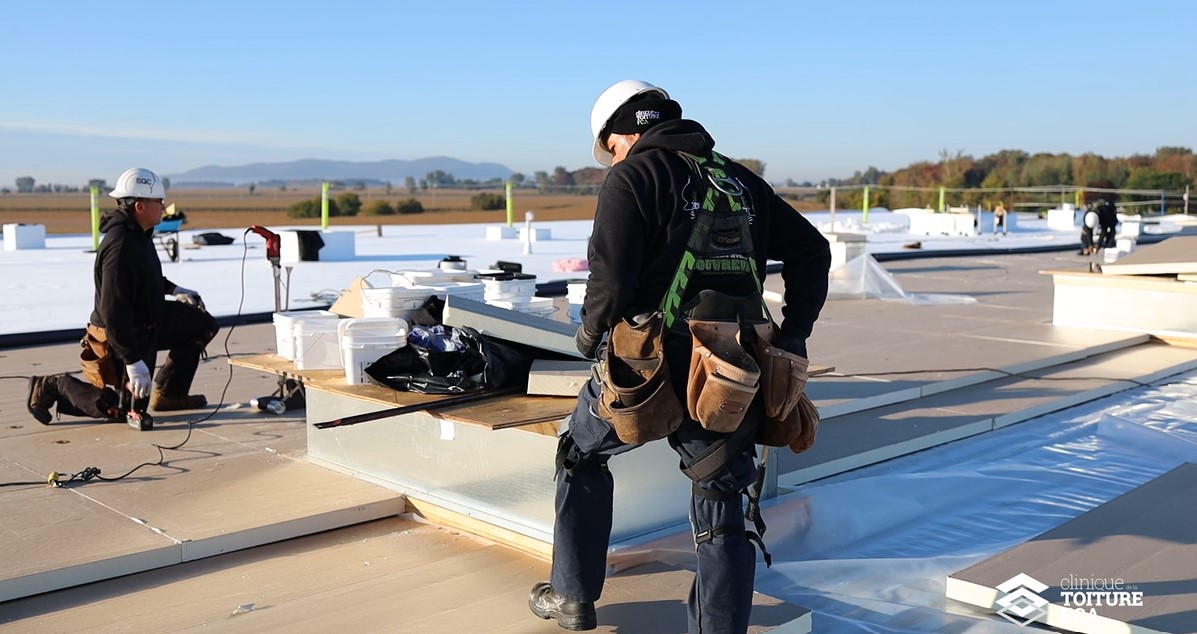
Home > Blog posts > How to calculate the R-value for insulation?
How to calculate the R-value for insulation?
While a roof is being built, remedied or repaired, there are several factors that must be taken into account. Among others, good insulation is crucial to a comfortable space and optimal energy efficiency. Calculating the R-value is part of the essential steps needed for you to obtain the necessary levels of insulation.
What is the R-value and how is it calculated? What is the R-value for good insulation? We tell you more about this value, which may seem unclear to you, and help you make better sense of it.
What is the R-value?
The R-value indicates a specific material’s thermal resistance. This is established in a lab, in order to provide you with an easy to understand indicator of performance. In fact, the higher the R-value, the more resistant the material is and the greater the thermal insulation it offers.
In other words, a material with a high R-value will allow for less heat or cold to circulate than a material with a lower R-value. A structure’s thermal resistance corresponds to the sum total of the R-value for each material used in the construction, which includes the insulation, but also the walls and drywall, among other things.
Knowing the total R-value for the combination of the different elements within the structure will allow you to calculate the thickness needed for the insulation material, by taking into account its properties. The insulation thickness will also vary according to the material used, obviously.
For example: closed cell polyurethane has an R-value of 5.5, while cellulose insulation has an R-value of around 3.6. Fiberglass (R-3.6) and rockwool (R-4.0) are also among the frequently used insulation materials. Take note that each one has different properties that are unique, on top of a different R-value, and that some become less efficient with time; this means that the R-value is not the only factor that needs to be considered.
If you want to obtain a specific thermal resistance, you will need a thicker insulation if you use fiberglass than you would with closed cell polyurethane, for example.
The R-value will be taken into account for the insulation of a roof, for example, but it is also used to calculate a building’s overall insulation.
The R-value will allow you to plan for the right insulation thickness, which in turn will allow you to avoid insufficient insulation, resulting in an uncomfortable living space and poor energy efficiency. These calculations will also allow you to avoid using too much insulation and spending more money than you need to!

How is it calculated?
If you want to calculate thermal resistance and evaluate if it is sufficient, or if you want to determine the amount of insulation you need, you will have to calculate each material’s R-value.
To do this, you need two variables. The first is the lambda insulation value, which is represented by the symbol λ. This value corresponds to a material’s thermal conductivity, which is expressed in W/mK (which stands for Watts per meter-Kelvin).
The second variable is simply the material’s thickness, in meters. So, the formula to be applied goes as follows:
R = material thickness / material thermal conductivity
This means that the lower the material’s thermal conductivity is and the greater its thickness, the higher the R-value.
You can apply this formula to obtain the thermal resistance for each material used, and add all of the results together. This will also allow you to calculate the R-value for specific insulation materials or to find the necessary thickness in order to attain the thermal resistance you are looking for.
Take note that the R-value is an imperial measure; you might sometimes find a value expressed in RSI, which corresponds to an international system. If you want to convert an R-value in RSI, all you have to do is multiply the first by 0.1761.

Understanding the R-value
In simple terms, the R-value indicates a material’s efficiency in terms of thermal insulation in a given space. The R-value is calculated according to the material’s thermal conductivity and thickness; then, the sum total of all of the materials’ R-value translates into thermal resistance.
A higher R-value signifies better thermal insulation, which in turn means a more comfortable interior and better energy efficiency. As you can see, this is a factor that will have a direct influence over your heating and air-conditioning bills!
But what R-value do you need for good insulation? Each part of the building structure falls under a specific set of rules and regulations. If you want to know if insulation is sufficient, you must take a look at the Building Code, which sets the minimum insulation requirements.
For example, an above ground wall will require a minimum value of R-24.5. When it comes to roof insulation, the sum total must reach R-41, except in some regions, where it must reach R-51.
You will also have to take into account other specific requirements, including the following values:
- Attic floors: R-value superior or equal to 7
- Attic ceilings: R-value superior or equal to 6
- Terrace roofing: R-value superior or equal to 4.5
As you can see, the building code sets minimum requirement values, but there are no “maximum requirements”.
Take note that a material’s insulating efficiency is not only determined by the R-value. On the one hand, each material has specific properties that must be taken into account. On the other hand, the R-value is a theoretical indicator, and reality can sometimes be very different on a work site. It is also important to consider how the different materials interact together.

Clinique de la toiture FCA takes care of the insulation in your roof!
Calculating the R-value will provide you with a more precise idea of the quality of your insulation and the amount of materials that you will need to use. However, given that this is theoretical data, it is important to understand what each material offers in terms of specific properties, and extensive knowledge of building and construction remains crucial to success.
If you want to make sure that you have the right insulation in your roof, the best thing to do is to rely on a team of professionals, who will be able to recommend the right insulation and the different roof materials according to their specific properties. This way, you will be able to improve your energy efficiency while also taking advantage of a job well done that will last for years.
We know all there is to know about insulation! With La Clinique de la toiture FCA, you will be dealing with a team of professionals who are used to dealing with roof insulation. Furthermore, we will get the job done quickly and efficiently.
A professional roofer’s expertise is exactly what you need in order to avoid mistakes and ensure a reliable and durable system. Do not hesitate to contact us for more information.
Need help?
Leave us your email address and we will contact you as soon as possible to assess your needs!
Put an end to your water infiltration your clogged drains your roof problems
Leave us your email address and we will contact you as soon as possible to assess your needs!
